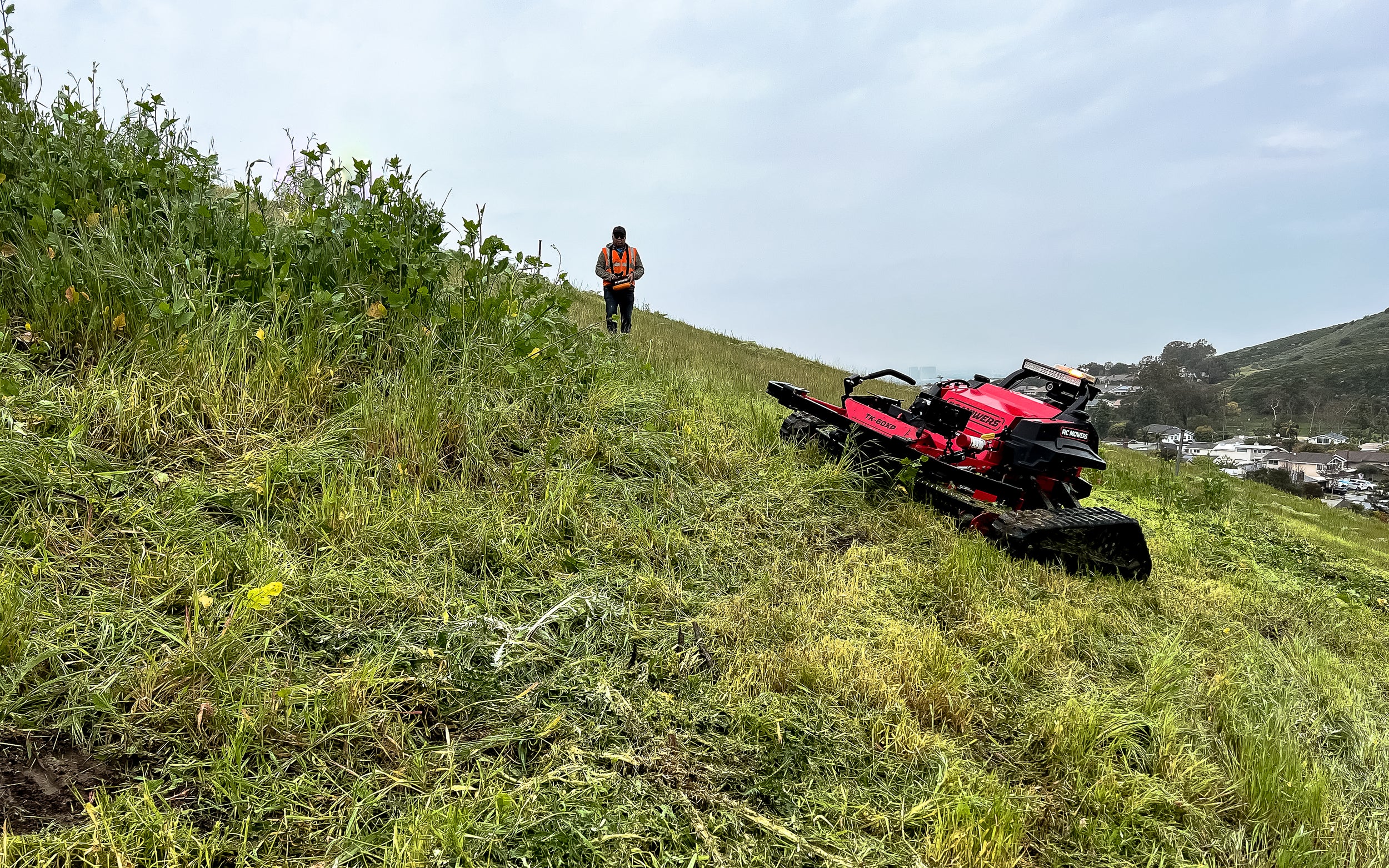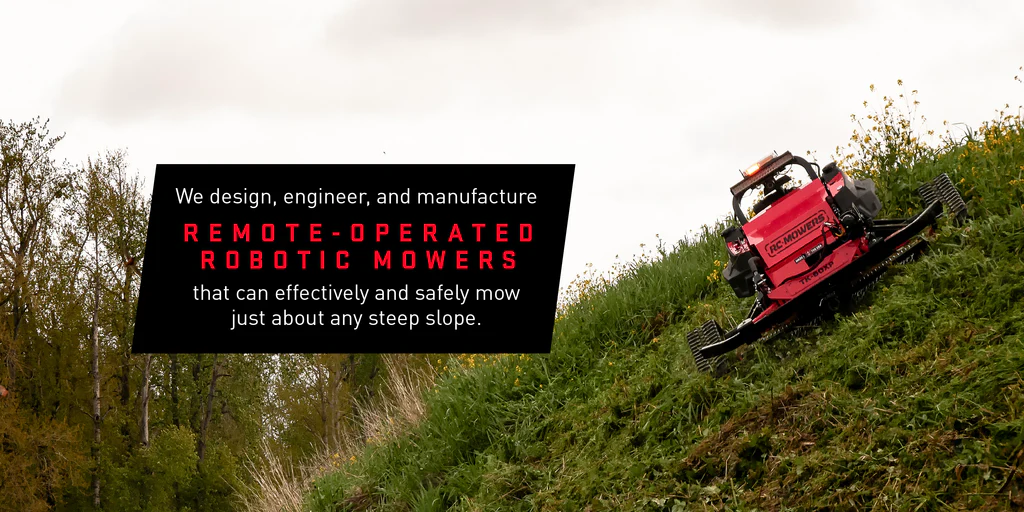How to Mow Steep Slopes

Table of Contents
Table of Contents
Elevate efficiency, profit, and safety
As we all know (or should know) the world is not flat. Most likely your property does not exist on one gentle, easy grade. You are not in the business of mowing and/or maintaining terrain that does not vary in pitch or slope.
Mowing steep slopes is a reality and must be approached with caution and some specific considerations. In this piece we will provide you with some helpful tips and ideas, dos, and don’ts and best practices for the safest ways to mow steep slopes.
Size up your hill and yourself
Make a careful assessment of the steep slope or slopes you are tackling. Is it too steep for your experience and equipment? What sort of obstacles, such as rocks, difficult vegetation, ruts, or stumps, are present? Are today’s weather conditions good for this sort of job?
If after a careful and honest assessment of the situation and your ability to “climb” this mountain, you opt to push on, please read on.
To push, to ride, or to remote-operate
At RC Mowers, we’re in the business of designing, engineering, and manufacturing Remote-Operated Robotic Mowers that can effectively and safely mow just about any steep slope. But we know that those reading this piece are not all landscape contractors or municipalities with the resources to purchase commercial grade equipment. There are steep incline hills out there that need mowing, and we hope to be of service to whomever is cutting that hill and however they are cutting it.
No matter how you’re cutting this steep slope, but especially if you’re working with a push mower, wear stable footwear with good traction, gloves, and eye protection when appropriate.
Push it
If a push mower is your steep-slope weapon of choice be sure it’s running well and has sufficient gas (sounds simple… but c’mon, you’ve been there). A self-propelled push mower with larger wheels, and certainly good traction, is most effective. You’ll work a bit harder with a push mower, which is offset by being lighter and more maneuverable than a riding mower, allowing more control. Gas is most common, but electric mowers actually take the trophy for lightness and ease of handling.
Whether gas, electric or rider, be sure to raise the deck height before mowing a steep slope—you want the least amount of resistance possible when navigating inclines.
When push mowing, always mow side-to-side on the hills. Traverse the width of the slope rather that marching up and down the hill. Side-to-side mowing is easier and safer. You expend less energy plodding up and then plummeting down the hill. It is also considerably safer—a sideways cut holds no possibility of a mower rolling backwards… you know, right where you are. Take a slightly vertical tact on your side-to-side cuts. This helps you control the mower and keep you balanced.
We’ve heard people recommend using a harness and rope tied off to an anchor point when push-mowing a steep slope. We feel if you require a climbing harness and a rope, like Sir Edmund Hillary, this steep slope is too steep for safe mowing. Call in a pro with specialized equipment, like maybe, hmmm, how about an R Series Remote-Operated Robotic Mower from RC Mowers?
Ride it
Right up front, a riding mower is not our first, or ideal, choice for the safest way to mow a steep slope. Rollover accidents are all too frequent and all too dangerous. If your steep slope can safely tolerate a riding mower, and you’re comfortable piloting on an incline—have at it with caution.
Make sure your machine is gassed up and in good working order; stalling out on slope can be tricky. On a rider, always mow up and down the hill, and not side-to-side as you would with a push mower. This cuts down the odds of a rollover incident occurring and getting squashed by a large, metal machine with sharp, whirling blades (is our bias showing?). Ideally, mowing only in a downward direction is safest. To achieve this, you need to find a less steep grade to ascend and top out on the hill, where you would then descend on your next cutting row. If you have a grass catcher onboard, be sure to empty it often to avoid an imbalance of weight on one side of the machine.
Remote-Operate it
Now we’re talking efficient, effective, fast, and super safe. At RC Mowers, we build the R Series Remote-Operated Robotic Mower for steep slopes up to 50 degrees, with the ability to cut brush up to 1.5 inches in diameter. These are professional, badass machines—if we do say so ourselves. If your backyard is blessed with a hill of gentle incline of say, 10°-20°, by all safe means get out there and mow it. If you’re faced with conditions loftier and more hazardous, please consider calling in specialists with specialized gear, like RC Mowers Remote-Operated Robotic Mowers. No one is pushing and no one is riding. One comfortably positioned operator at a safe distance joy-sticking their way to a beautiful, danger-free result.
Work faster, smarter, and safer with Remote-Operated Robotic Mowers that have proven over and over again to be time-savers, money-makers, and worker-protectors. Click here to learn more or request your own hands-on demo.

